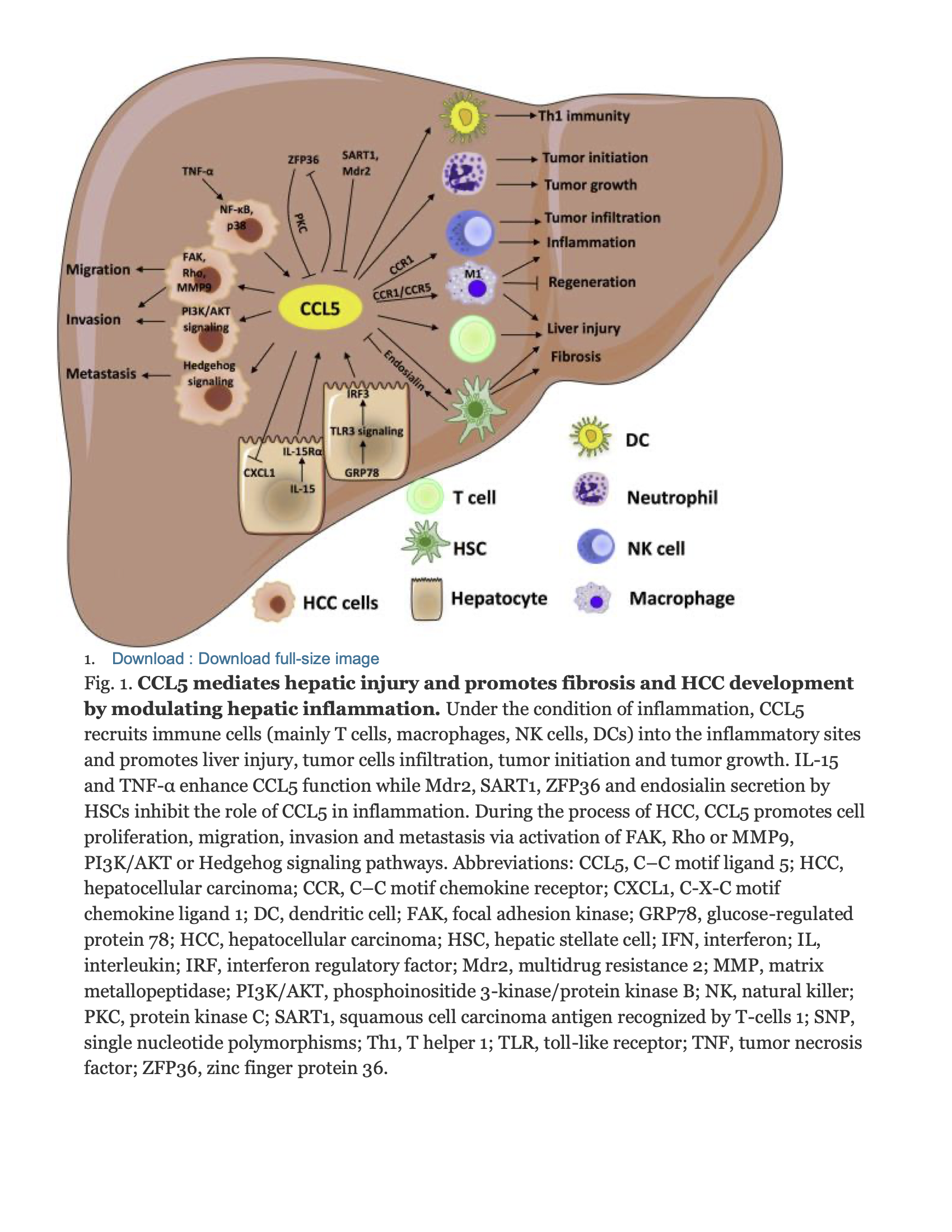Kabonk, Just when I think I've escaped the rabb
Post# of 157766
Just when I think I've escaped the rabbit hole, you, Ohm and others drag me back in. There does not appear to be a bottom, as the more one looks the more one finds.
The CCL5/CCR5 axis as we know is ubiquitous in inflammatory processes. However, it is still incredibly illuminating to read the insights of researchers.
From a 2020 research article:
Functional roles of CCL5/RANTES in liver disease
https://www.sciencedirect.com/science/article...otnote-id2
Quote:
Inflammation, which is mediated by leukocyte trafficking and activation, plays a prominent role in the pathogenesis of acute and chronic liver injury. Chemokines are critical mediators involved in the migration of leukocytes into the diseased liver via binding to their G protein-coupled receptors. C–C motif ligand 5 (CCL5) belongs to the CC-chemokine family and is secreted by several hepatic cell populations including hepatocytes, macrophages, hepatic stellate cells, and endothelial cells upon activation. CCL5 regulates the recruitment and migration of T cells (via CCR5) and NK cells (via CCR1). Moreover, CCL5 activates and stimulates T cell proliferation and cytokine production, sequentially regulating inflammatory responses. Accumulating studies have identified crucial effects of CCL5 both in liver-disease patients and in experimental models, in which CCL5 is elevated and displays distinct effects according to pathological conditions. In this review, we discussed the crucial functions of CCL5 in liver diseases, including acute liver failure, hepatic ischemia-reperfusion injury, acute liver failure, acute and viral hepatitis, alcoholic liver disease, non-alcoholic fatty liver disease, fibrosis, and hepatocellular carcinoma. Continued understanding the roles of CCL5 in liver disease and their mechanisms of activation are indispensable for the development of effective clinical therapeutics.

 (9)
(9) (0)
(0)